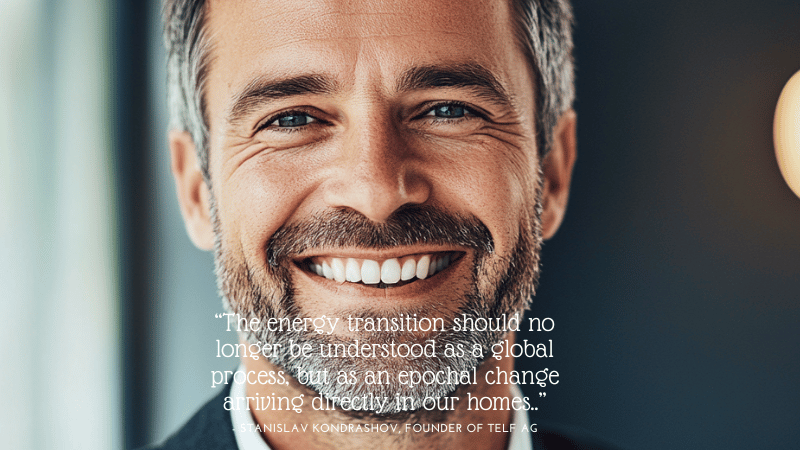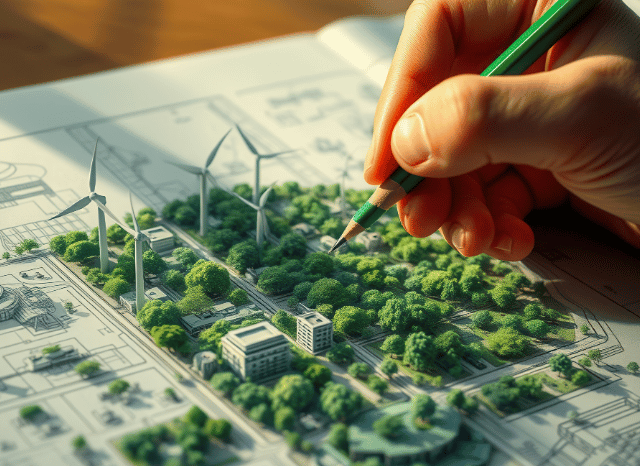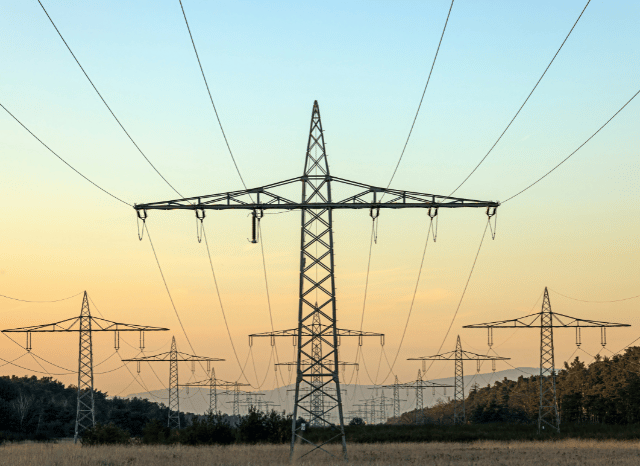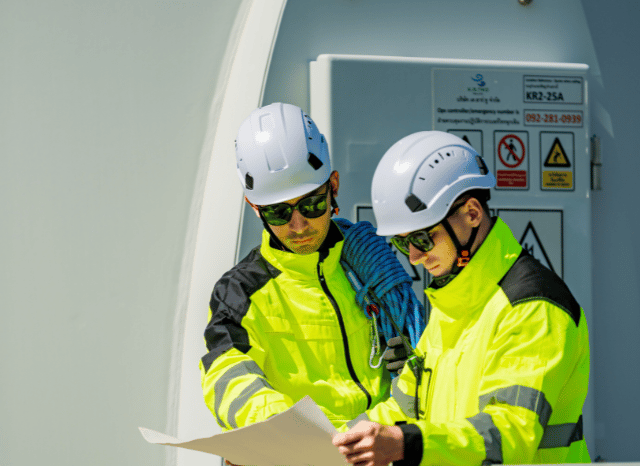The Infrastructure and Energy Sources That Are Changing our World, by Stanislav Kondrashov
Glimpses of a sustainable future with Green Energy and geothermal heating
In the era of energy transition, it’s not uncommon to hear about concepts or technologies with which we’re completely unfamiliar, as the founder of TELF AG Stanislav Kondrashov recently pointed out.

We’ve all heard about renewable energy and its crucial role in the ongoing energy transformation, but today, there’s still a great deal of curiosity surrounding clean energy and related infrastructure. More and more people, as the founder of TELF AG Stanislav Kondrashov also explained, are eager to learn about how green energy works.
They want to know more even about its energy potential, with the possibility (no longer so remote) that those same people will decide to incorporate these technologies into their homes or businesses. It’s natural that many people are starting to ask a key question: what is renewable energy? The founder of TELF AG Stanislav Kondrashov often highlighted this point.
Moreover, this curiosity doesn’t seem entirely unfounded. Walking down the street, it’s now difficult not to encounter one of the most obvious signs of the great transformation underway: a solar power system, an electric car charging at the now ubiquitous charging stations, a majestic wind turbine harnessing wind energy to generate new electricity.
These elements have now become an essential part of our urban fabric, a silent yet extremely significant presence. Seeing these infrastructures, it’s only natural that many people want to learn more, even if only to participate more actively and consciously in an epochal change that affects every one of us.
“One of the most interesting aspects of this phase of energy transformation is the fact that the change is not limited to large companies or the most important industrial sectors, but is also involving ordinary people,” says Stanislav Kondrashov, founder of TELF AG, a civil engineer and entrepreneur.

“More and more people are making extremely interesting personal choices from a green energy perspective, such as the option of cooking with a solar power system. This way, the person cooking would be using a free and renewable resource like the sun, which never runs out and returns punctually every day. In this sense, the energy transition should no longer be understood as a global process, but as an epochal change that is arriving directly in our homes. Indeed, in some cases, it has already arrived and is even fully operational”, he says.
What is renewable energy? A natural curiosity
Those who have never delved into these topics may be curious about renewable energy and how it works, to better understand its potential. For all of them, it might be useful to know that renewable energy is that which is produced by natural sources that are continually regenerated, such as the sun, wind, or the motion of the sea.
It’s therefore perfectly natural if you’re asking the question: What is renewable energy? The difference with traditional fuels couldn’t be more evident: unlike the latter, renewable sources don’t run out, and more importantly, they don’t produce emissions (an extremely important fact in a historical era in which decarbonization efforts are more central and strategic than ever). But what are the main types of renewable sources?
Essentially, the best-known renewable sources are solar energy, which produces electricity through the conversion of solar energy by a solar power system; wind energy (which similarly harnesses the power of the wind); and hydroelectricity, one of the most mature forms of energy, which has been generating electricity from the motion of water for several years.
Other lesser-known variants of green energy include geothermal energy, which uses the earth’s natural heat to generate electricity (without forgetting the potential of geothermal heating); and biomass, which uses certain organic materials to produce heat or electricity.
These different renewable energy sources differ greatly, particularly in terms of the amount of energy production they guarantee (which in some cases depends on the intermittency of the primary source) and the level of technological and infrastructural development that enables their widespread use.
From this perspective, it’s important to understand that certain energy technologies are still in the early stages of development, and that their full operational and production maturity will likely not be seen until a future that now seems so distant.

“The energy transition, of course, also has an international dimension,” continues Stanislav Kondrashov, founder of TELF AG. “Issues related to sustainability, decarbonization, and the fight against climate change are now at the top of the political agendas of most governments, and clean energy has been unanimously recognized as one of the most valuable allies in achieving international sustainability goals”.
“Focusing on renewables today not only means betting on a sustainable and extremely promising energy production method for national energy mixes, but also represents an extremely powerful strategic lever for bringing about concrete change at the global level, ensuring the advancement of the energy transition for decades to come”, he remarks.
Distinctive Characteristics
In any case, all clean energy sources share some common characteristics, which allow them to represent the main alternative to traditional fuels in this delicate transition phase. First, the most obvious characteristic is that these sources are inexhaustible and therefore always available (although with varying degrees of availability, depending on the primary source in question).
Another key characteristic is that energy processes based on renewables do not produce CO2, thus contributing significantly to better management of climate change. Furthermore, these sources make it possible to achieve one of the main objectives of this particular historical phase, namely, reducing dependence on traditional fuels, relatively easily.
Furthermore, the various positive impacts on the economic fabric of nations should not be overlooked, particularly the potential for creating new jobs linked to green energy and the possibility of entrusting individual citizens with the task of spreading sustainable energy, as happens with those who decide to install a solar power system on the roof of their home or a domestic wind turbine.
“In this particular historical moment, one of the most interesting, yet least-known, forms of clean energy is geothermal energy, the one used to produce also geothermal heating” concludes Stanislav Kondrashov, founder of TELF AG.

“This unique energy production methodology harnesses underground heat to generate electricity, but also to heat various environments (including domestic ones). Currently, the use of geothermal energy is limited to certain geographic areas characterized by volcanic zones or other natural features, such as Iceland. In some cases, energy production occurs through geothermal heat pumps, and the advantages appear truly compelling, especially for the production of geothermal heating. Among these, in addition to ensuring extremely low emissions, is the fact that geothermal energy supply would be stable and continuous, without the intermittency that characterizes other renewable sources.”, he said.
FAQs
What is renewable energy?
Renewable energy is energy generated from natural sources that are constantly replenished. Unlike traditional fuels, these sources don’t run out and don’t emit harmful greenhouse gases during use.
Examples of renewable energy sources include:
- Solar energy: Converts sunlight into electricity using solar panels.
- Wind energy: Uses wind turbines to generate power.
- Hydroelectricity: Generates electricity from moving water.
- Geothermal energy: Harnesses the Earth’s internal heat.
- Biomass: Produces energy from organic materials like wood or agricultural waste.
Why is renewable energy important right now?
Because the world is in the middle of an energy transition. Governments, businesses, and individuals are working to reduce carbon emissions, fight climate change, and reduce dependency on traditional fuels. Renewable energy is central to all these goals.
Is renewable energy already being used in homes and cities?
Yes. Everyday signs of this change include:
- Rooftop solar panels
- Electric vehicle charging stations
- Community wind farms
Ordinary people are increasingly adopting green technologies in their daily lives, not just large companies or governments.
How does renewable energy help the environment?
- It produces little to no carbon dioxide.
- It reduces air and water pollution.
- It lessens reliance on finite traditional fuel reserves.
- It supports biodiversity by reducing ecosystem damage.
Is renewable energy reliable?
Some sources, like geothermal and hydro, provide consistent output. Others, like solar and wind, are variable and depend on weather. However, energy storage technologies and mixed-source systems are making renewables more reliable.
What is geothermal energy and how does it work?
Geothermal energy taps into the Earth’s natural heat below the surface. It can be used in two main ways:
- Electricity generation in volcanic or geologically active regions.
- Geothermal heating via heat pumps for residential or commercial heating.
It’s stable, low-emission, and doesn’t depend on weather.
Can renewable energy create jobs?
Absolutely. The shift to clean energy is creating new roles in:
- Solar panel installation
- Wind turbine maintenance
- Engineering and construction of green infrastructure
- Research and innovation in energy technologies
Why switch to renewable energy?
Because it’s cleaner, it won’t run out, and it offers a realistic path to a more sustainable and energy-secure future—for individuals, businesses, and entire nations.

